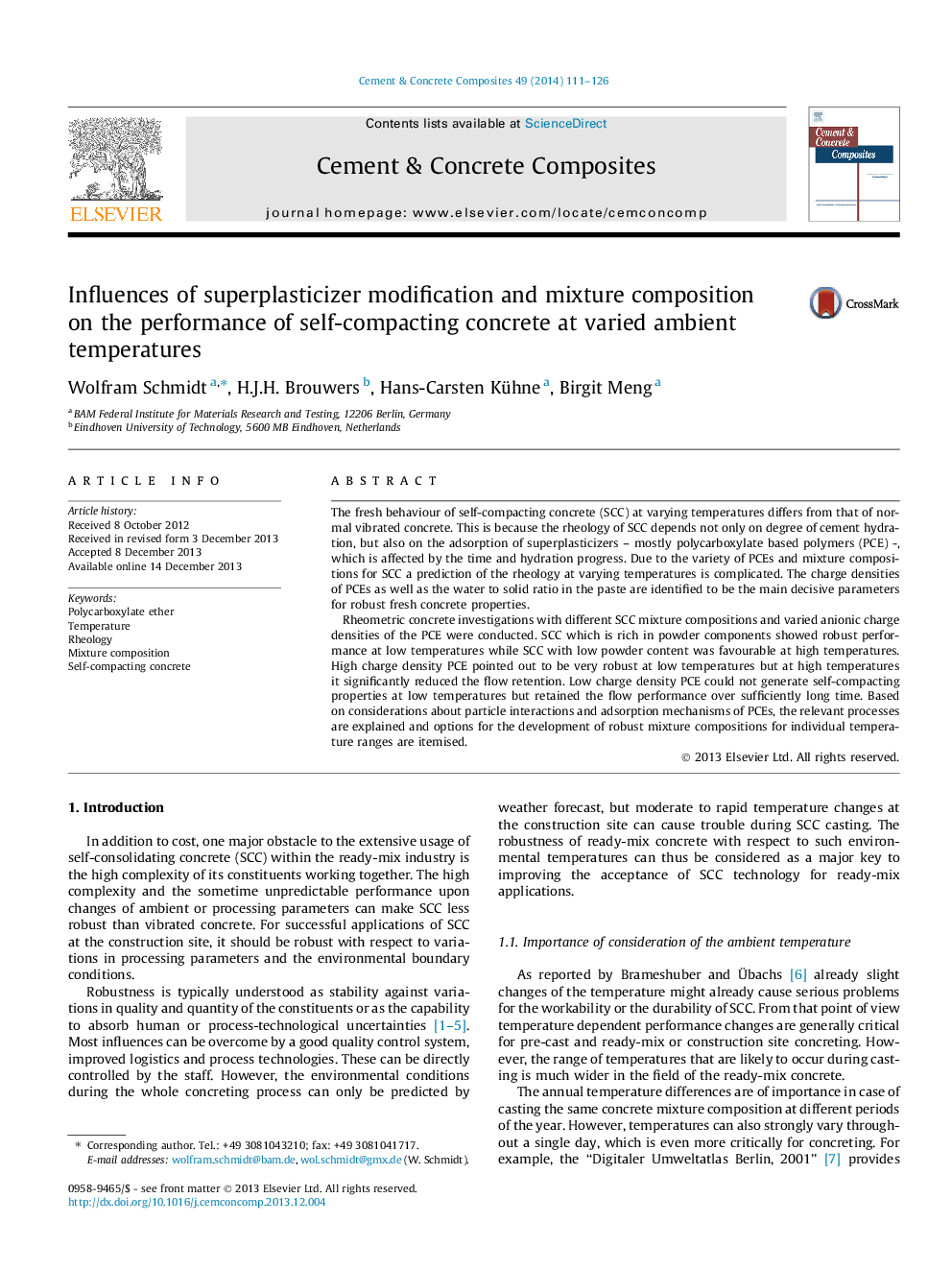| Article ID | Journal | Published Year | Pages | File Type |
|---|---|---|---|---|
| 1454678 | Cement and Concrete Composites | 2014 | 16 Pages |
The fresh behaviour of self-compacting concrete (SCC) at varying temperatures differs from that of normal vibrated concrete. This is because the rheology of SCC depends not only on degree of cement hydration, but also on the adsorption of superplasticizers – mostly polycarboxylate based polymers (PCE) -, which is affected by the time and hydration progress. Due to the variety of PCEs and mixture compositions for SCC a prediction of the rheology at varying temperatures is complicated. The charge densities of PCEs as well as the water to solid ratio in the paste are identified to be the main decisive parameters for robust fresh concrete properties.Rheometric concrete investigations with different SCC mixture compositions and varied anionic charge densities of the PCE were conducted. SCC which is rich in powder components showed robust performance at low temperatures while SCC with low powder content was favourable at high temperatures. High charge density PCE pointed out to be very robust at low temperatures but at high temperatures it significantly reduced the flow retention. Low charge density PCE could not generate self-compacting properties at low temperatures but retained the flow performance over sufficiently long time. Based on considerations about particle interactions and adsorption mechanisms of PCEs, the relevant processes are explained and options for the development of robust mixture compositions for individual temperature ranges are itemised.
